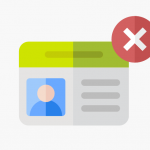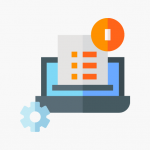
Digital solutions that help the education sector
Escrito por: Marketing Team Fecha Wednesday 9, June 2021 Categoría: General
In recent months, the education sector has experienced an acceleration in its digital transformation. Some 80% of schools, educational centres and universities have already begun to implement technology and digital tools as a means of attracting new students and renewing internal organisational processes.
Some of the tools they have started to incorporate are digital certificates and electronic signature. So, how can digital certificate and digital signature help schools?
Employees: the first stage of technology adoption
Most professionals are initially afraid of technology as it forces them out of their comfort zone. However, they benefit enormously from its implementation, making their work faster and more secure. In the case of the digital certificate, professionals in the education sector can sign documents electronically, access the electronic offices of public administrations and assign the use of the certificate to employees.
In the case of universities, the digitalisation of their processes and communications is a priority task. As Paco García, Head of the Digital Transformation Service at the Universidad Autónoma de Madrid, explained in our webinar about innovation in educational institutions, the Rector is an essential player in the signing of documents and the only person to whom some Public Administrations allow the collection of notifications.
However, it is impossible for the Rector to attend to all these tasks on a day-to-day basis and he needs certain employees to carry out these tasks on his behalf. And how do you do this? Effectively, with the digital certificate. Of course, always controlling the use made by the employees and establishing the rules of use. For example, by deciding the hours when they can use the certificate, which specific URL they can access or that they can only do so from their work computer.
There are digital platforms that allow you to issue new certificates, securely store them in the cloud and monitor employee usage in real time. We can detect the activity of each employee because digital certificates contain information about the holder, such as the organisation and department to which they belong and the position they hold.
The centralisation of the digital certificate: digital security in the education sector
Some problems arise when working with digital certificates. Following the example of UAM in the education sector, we saw how:
- Certificates are copied without control on computers, losing traceability of use and their protection.
- Employees lose or forget the card containing the certificate and are unable to work.
- Theft of computers on which the certificates were installed, resulting in a security breach and leaving the employee unable to work.
- In case of using readers for the use of certificates, the IT staff needs to install drivers for their operation on all employees’ computers, which is really complicated and raises compatibility problems.
- There is a high rotation of employees and the IT staff spends the whole day installing, changing and/or updating certificates.
With centralisation in the cloud, certificates are securely stored, protected and can be worked at all times. No matter where the employee is working from, no matter if positions change or computers are lost, the certificates are safe and with them the security of the school.
New form of digital communication with students
Once the processes have been digitised, it is time to go one step further: incorporating technology into student relationships.
From the moment a person is interested in studying at an educational centre until the end of their studies, students go through different phases that require the signing of documents. For example, when registering, obtaining a student card, validating credits, applying for a scholarship or signing an internship.
Colleges are used to doing all this paperwork in person, receiving students on the premises. But what can we do now? Students do not go to the centres in person and, if they do, the procedures to carry out any kind of procedure extend for an eternity.
In this sense, the electronic signature is being the salvation of the centres in the education sector. Students can sign documents remotely and from any mobile device. For this purpose, there are signature tools that offer different types of signature so that we can choose the one that suits us at any time and collect electronic evidence to have full legal validity.




